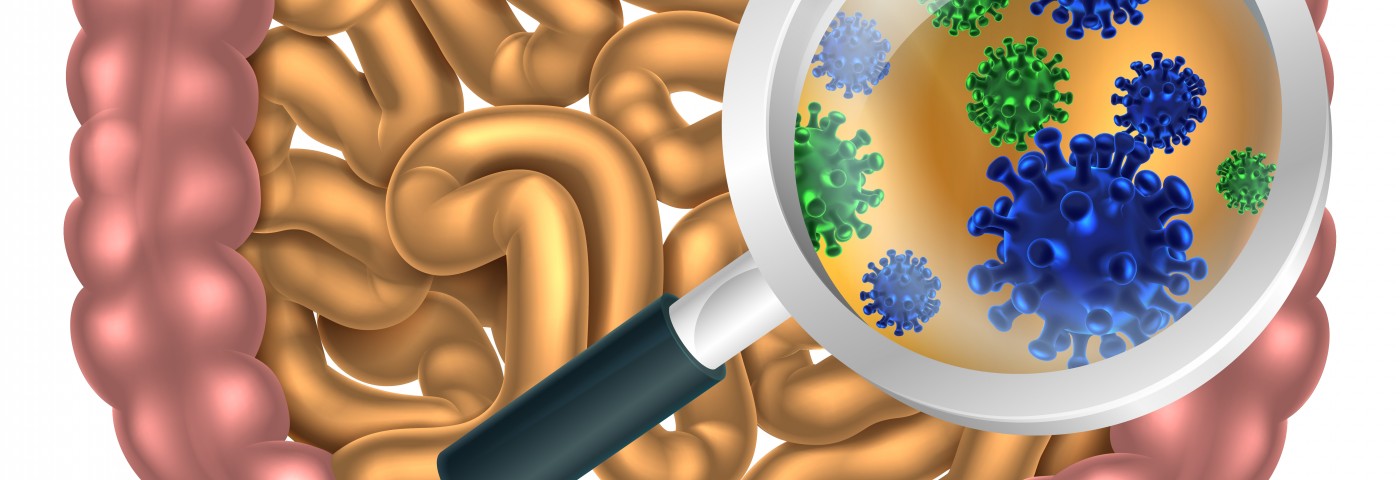The gut microbiome — the bacterial flora of our intestines — is notoriously difficult to study in a laboratory setting. Because of this, realistic models to study the interaction between the microbiome and intestinal epithelial cells have for long been considered out of reach. For the first time, scientists at the Wyss Institute for Biologically Inspired Engineering have now succeeded in co-culturing a human gut microbiome with intestinal cells using gut-on-a-chip technology.
Inflammatory bowel disease (IBD) is mainly characterized by abnormal immune responses. Researchers, however, know that other intestinal factors can contribute to disease development and aggravation of symptoms. Peristaltic movement, intestinal epithelial cells and the gut microbiome all contribute to pathology in IBD, but until now, studying the contribution of individual components to this process has not been possible. The new gut microenvironment model allows scientists to examine how normal and disease promoting gut bacteria contribute to the immune responses.
The study, entitled “Contributions of microbiome and mechanical deformation to intestinal bacterial overgrowth and inflammation in a human gut-on-a-chip” was co-led by Wyss Institute Founding Director Dr. Donald Ingber, and Wyss Core Faculty member Dr. James Collins. It was published in the journal Proceedings of the National Academy of Sciences (PNAS) on December 14, 2015.
The gut on a chip is one of three organs-on-chips developed by the Institute to date. The gut model, developed by Wyss in 2012, is a miniature version of a living gut. Made of a transparent flexible polymer, the memory stick-sized device contains a hollow channel with the ability to closely imitate the conditions of a human gut. The lumen of the device — subject to peristaltic motion — is lined with intestinal cells. Fluid movement mimics natural gut flow and gut microbes thrive in the lumen, closely interacting with the intestinal cells.
In a recent press release by Wyss, Dr. Hyun Jung Kim, former Wyss Technology Development Fellow and first author of the study, spoke about the limitations of conventional models of gut microbiota and inflammation of the gut, “Chronic inflammation of the intestine is thought to be caused by abnormal interactions between gut microbes, intestinal epithelial cells, and the immune system, but so far it has been impossible to determine how each of these factors contribute to the development of intestinal bowel disease.”
Founding Director Dr. Ingber added: “Until now, use of traditional culture methods and even more sophisticated organoid cultures have prevented the microbiome from being studied beyond one or two days. With our human gut-on-a-chip, we cannot only culture the normal gut microbiome for extended times, but we can also analyze contributions of pathogens, immune cells, and vascular and lymphatic endothelium, as well as model specific diseases to understand complex pathophysiological responses of the intestinal tract.”
Apart from being a proof of concept for the microengineered in vitro model of human intestinal inflammation and bacterial overgrowth, key findings from the study show that four main cytokines (signaling molecules) are working in a coordinated fashion to induce inflammation, subsequently leading to damage of the gut lining. The team also observed that when peristaltic movement ceased while fluids were passing at a normal rate, a rapid bacterial overgrowth occurred in a similar fashion to what is observed in patients.
Scientists at Wyss now foresee a future when the culture of cells and microbiota from individual patients in a gut-on-a-chip may be used to find individualized treatment strategies for IBD patients.
Expanding on the topic, Dr. Ingber concluded: “Previously the microbiome and its role in human health were largely defined through study of their gene expression, but now, by being able to carry out human experimentation in vitro relating to how the microbiome, human intestinal cells and human immune components interplay, we hope to gain a much deeper understanding of underlying pathophysiological mechanisms that will hopefully lead to development of new and more elective therapies.”

